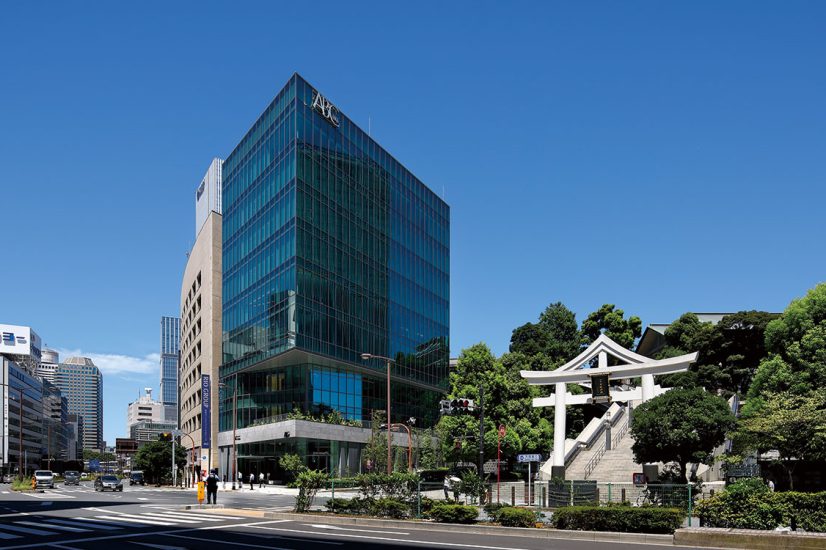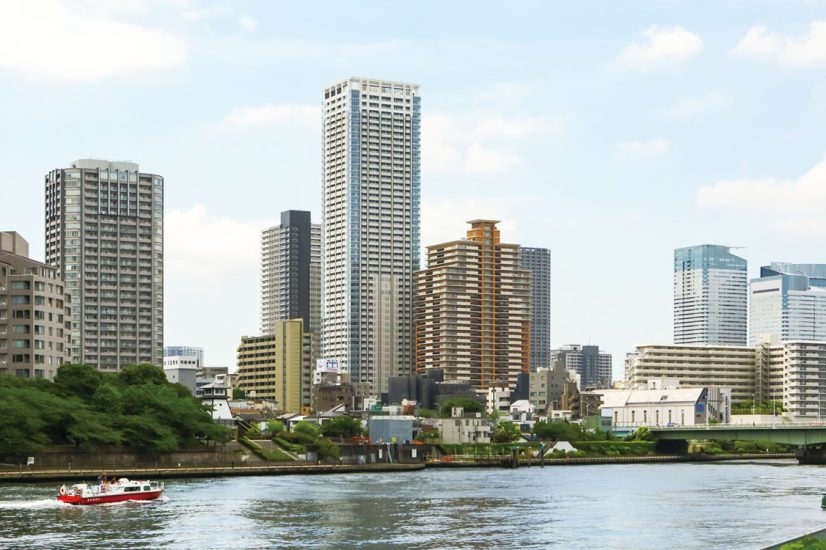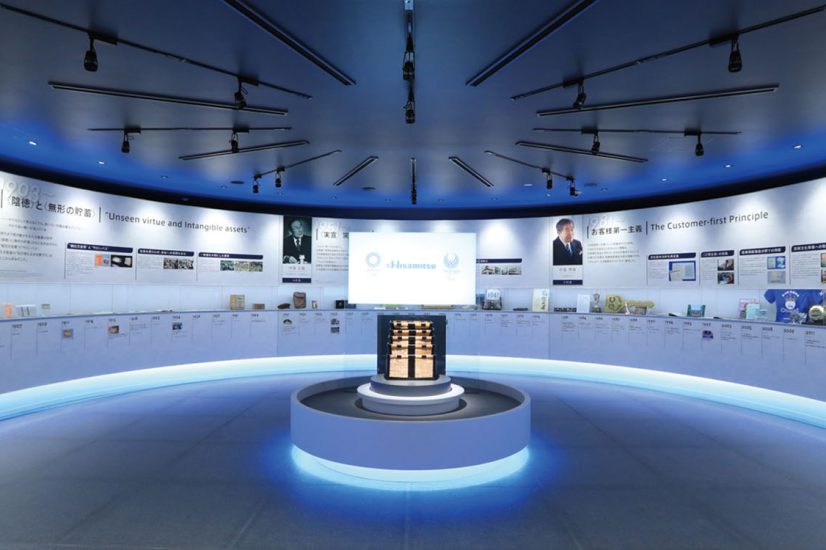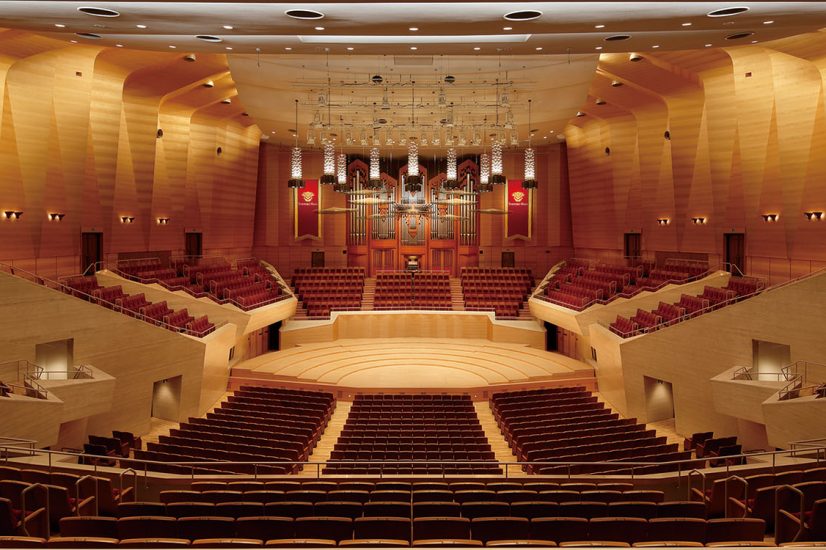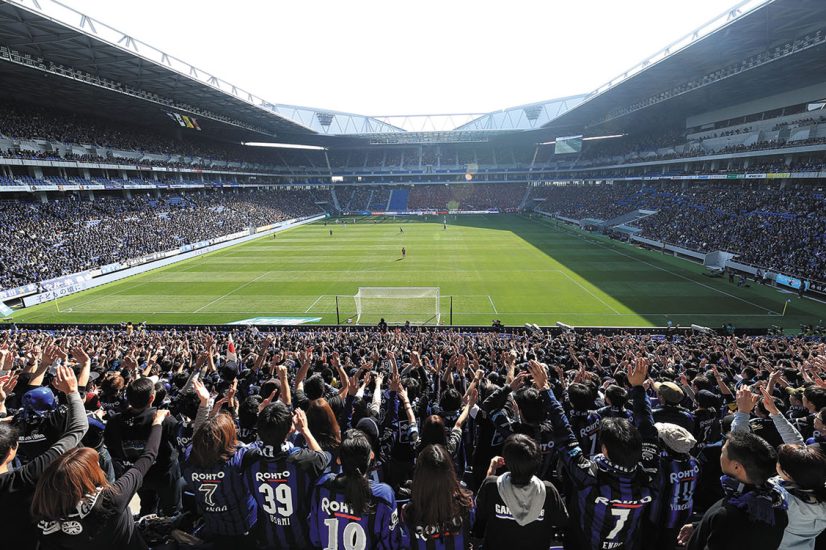A town office complex connecting the town and residents
The Agui Town Office
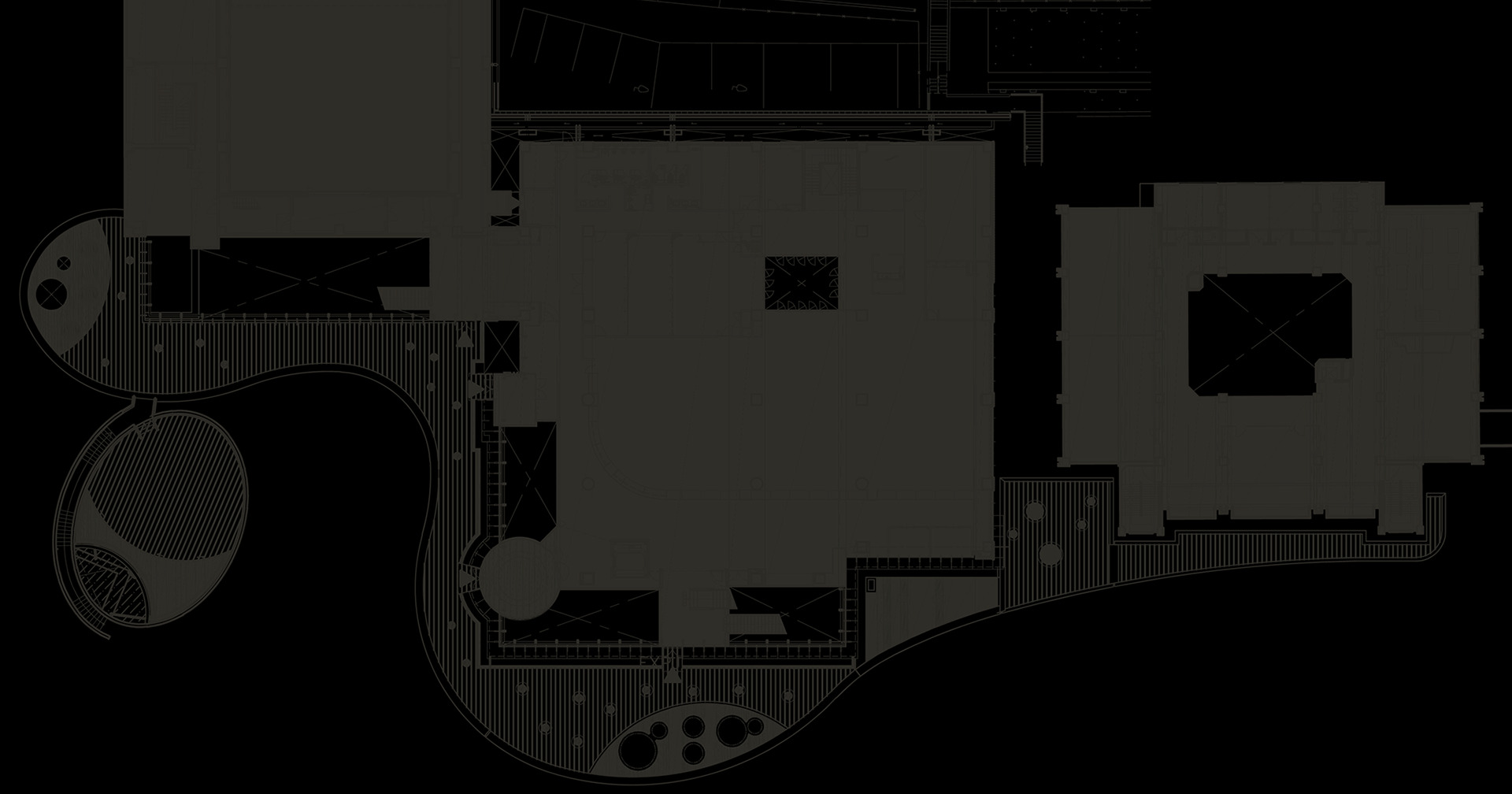
With the highest increase rate in the number of households in Aichi Prefecture, a town office complex became a symbol of the town that continues to grow despite the national population decline.
Located at the center of Chita Peninsula, Agui Town in Chita District, Aichi Prefecture, is approximately 30 kilometers south of Nagoya, the administrative, economic, and cultural center of the Tokai region. The town developed as a commuter suburb with the accessibility of 30 minutes by train to the center of Nagoya. While many local governments are struggling with population decline, this town has the highest increase rate in the number of households and the second highest population increase rate in the prefecture. The bucolic landscape that stretches along the railway and the Agui River that runs through the town are still habitats for fireflies. Agui Town, blessed with a rich natural environment, has several initiatives to support families with children, including free medical care for children until they graduate junior high school.
The Agui Town Office , completed in March 2017, is a complex consisting of four facilities: the government office, a multi-purpose hall, a cafeteria, and the existing central community center. The facilities surround “Minna no Hiroba (plaza for everyone) ” located in the center, while being loosely connected by “Engawa(veranda) Mall ,” a semi-outdoor space under the eaves. Since its completion, it has become a place for citizens to interact through various events. Masahiro Masuda and Shigeki Kawai , who designed the building, says, “Since the early proposal, we had a consistent idea of considering the existing central community center as part of a series of facilities and connecting them with the Engawa Mall to offer a sense of unity. While many recent government buildings have struggled to execute construction as per the proposal due to economic reasons, we managed to complete the building with almost no changes from the schematic design phase. It was probably because we shared the same vision on the role and goals of the new building with the mayor and the town officials.”
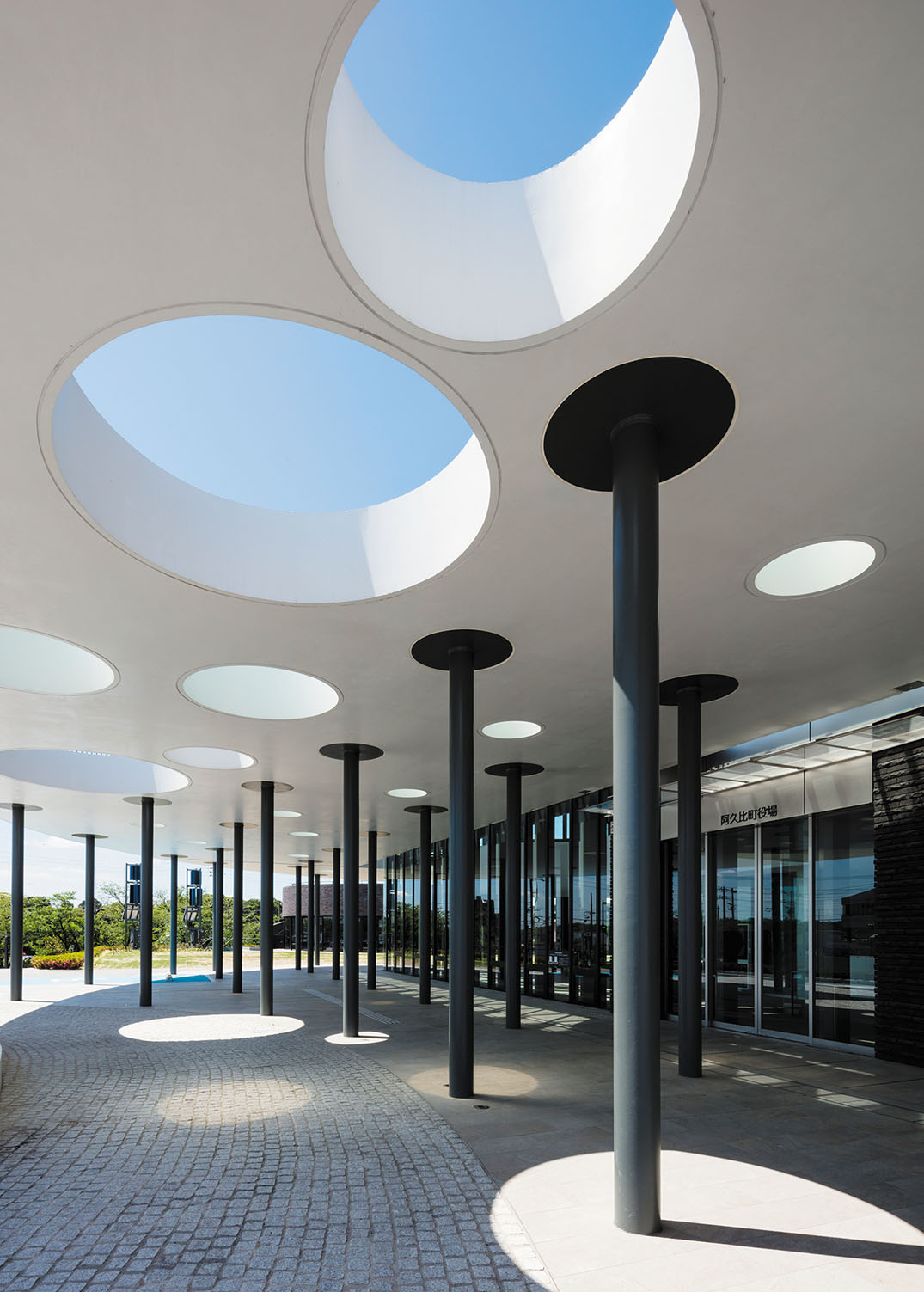
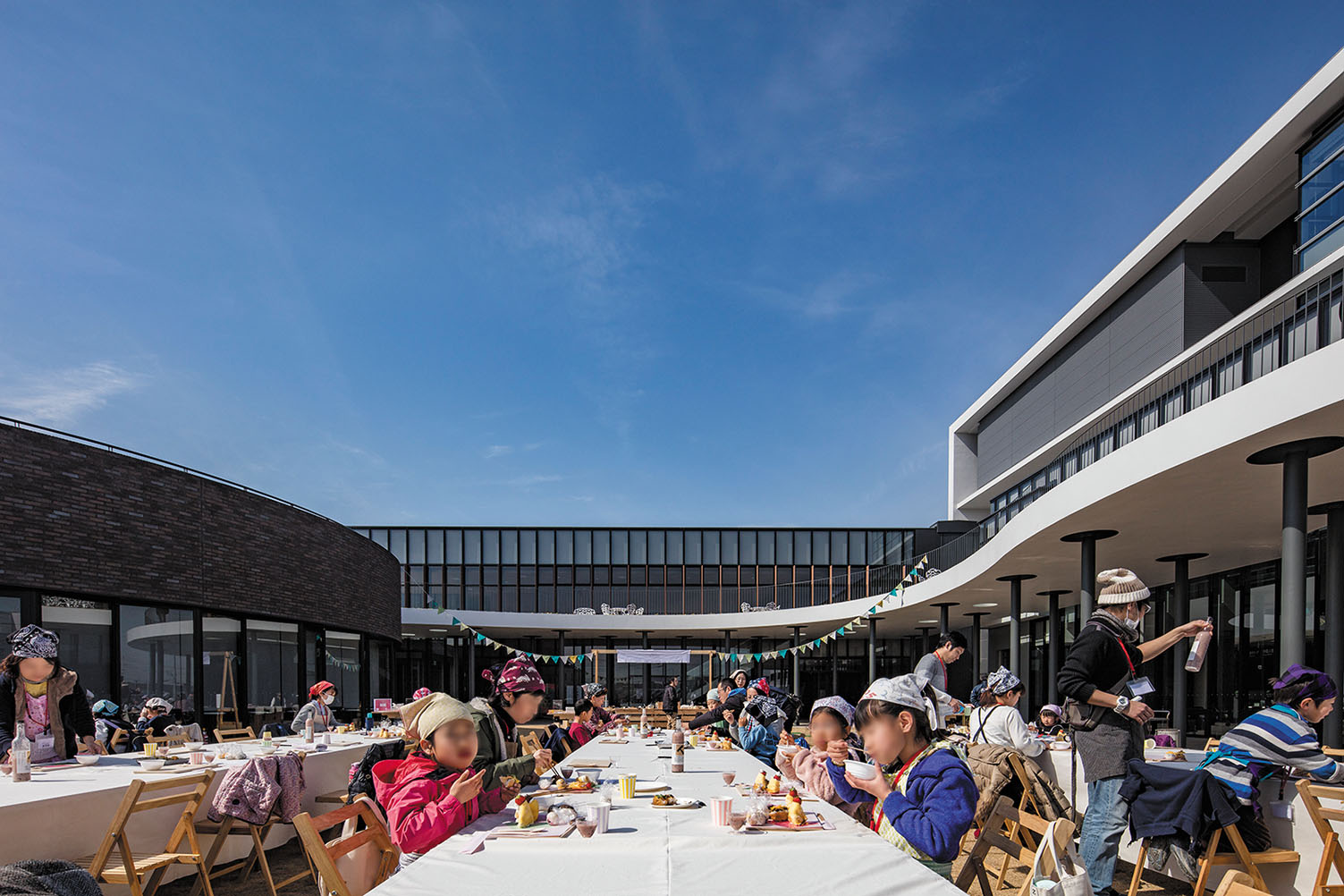
Building layout unchanged from the original proposal, and its role and meaning
The Engawa Mall symbolizing the new government building’s concept—“connecting the town and people”
The town office complex is located in the center of the town close to Agui Station. Its facilities are arranged taking advantage of the gentle hilly terrain. The area facing Minna no Hiroba was designed as a bright atrium, which increases the visibility and openness of the facilities, offering visitors a sense of security.
“The layout of the buildings as well as their roles and meaning have remained the same since the beginning. In the event of a disaster, the task force function will be consolidated to the government building. The multi-purpose hall will become the temporary evacuation site . The cafeteria will be a soup kitchen. Furthermore, the plaza will become a disaster prevention park. Thankfully, this time, the concept we proposed resonated with the town, which motivated us even more to meet their expectation and create something that could satisfy everyone.” (Kawai)
Minna no Hiroba symbolizes concepts of the new government building: connecting the town and people, and encouraging interaction and activities among citizens. The Engawa Mall was conceived from freehand sketches tracing the Agui River. They are both made of gently curved lines, which make up the imagery of the entire town office complex. “If we had used straight lines for the Engawa Mall, it must have given a completely different impression. However, as the hilly area with gentle slopes has a lot of greenery, it felt awkward to use clean straight lines. We expected the visible parts, including the roof, to blend into the background, which is why we used gentle curves.”
On top of the Engawa Mall is a terrace, which requires adequate earthquake resistance to be used by many people. For this reason, Kawai held meetings after meetings with the structural designers. “We have skylights on the eaves, which not only let in natural light but also reduce the amount of concrete used for the deck. While we know it is a bad idea to create unnecessary openings for the sake of design, we also had to reduce the deck weight. Otherwise, we would need other measures, such as making the columns thicker or increasing their number, which would have made the Engawa Mall less easy to promenade. To reduce the load while maintaining strength, as well as making the details clean, we received a variety of constructive suggestions from the structural designers.”
The team confronted a cost issue as the design proceeded. Although they always remained conscious of cost control during the process, it became difficult to keep the construction cost within the original budget due to the soaring cost of materials and labor following the Great East Japan Earthquake. However, taking such circumstances into account, the town government earmarked a supplementary budget for the construction of the new building. “Whenever we raise the budget, we would normally receive several opinions from the congress. However, although the construction market has been affected by the disaster, the function and role required of the new building never changed. We explained this point and the reasons for the cost increase in detail using multiple documents, which managed to receive understanding and approval. This was probably due to both sides sharing the same vision of the new town office. We had spent a lot of time discussing with the town government to determine the details, including the purpose of the multi-purpose hall and the office layout. Through such a process, I feel we succeeded in sharing our vision.”
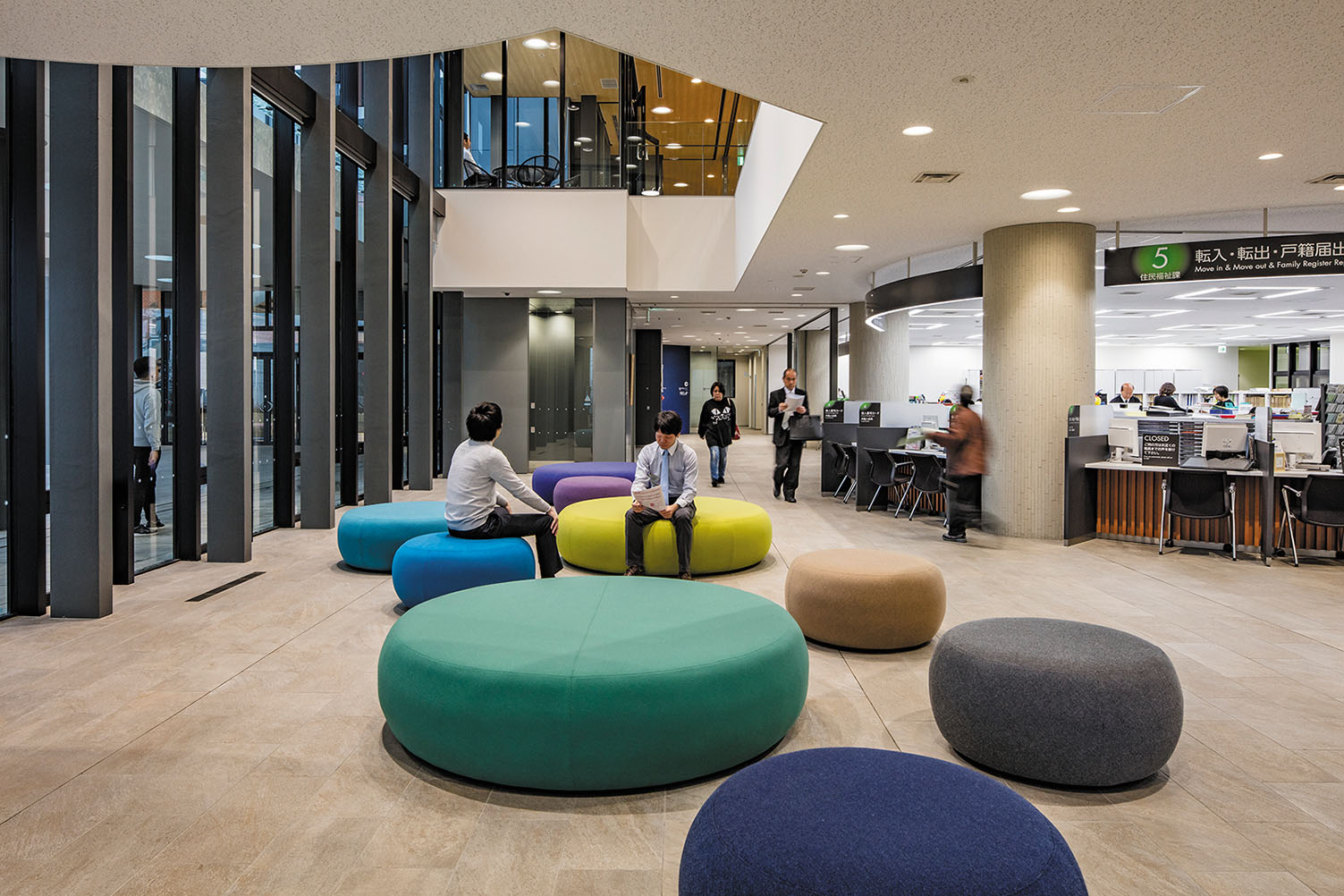
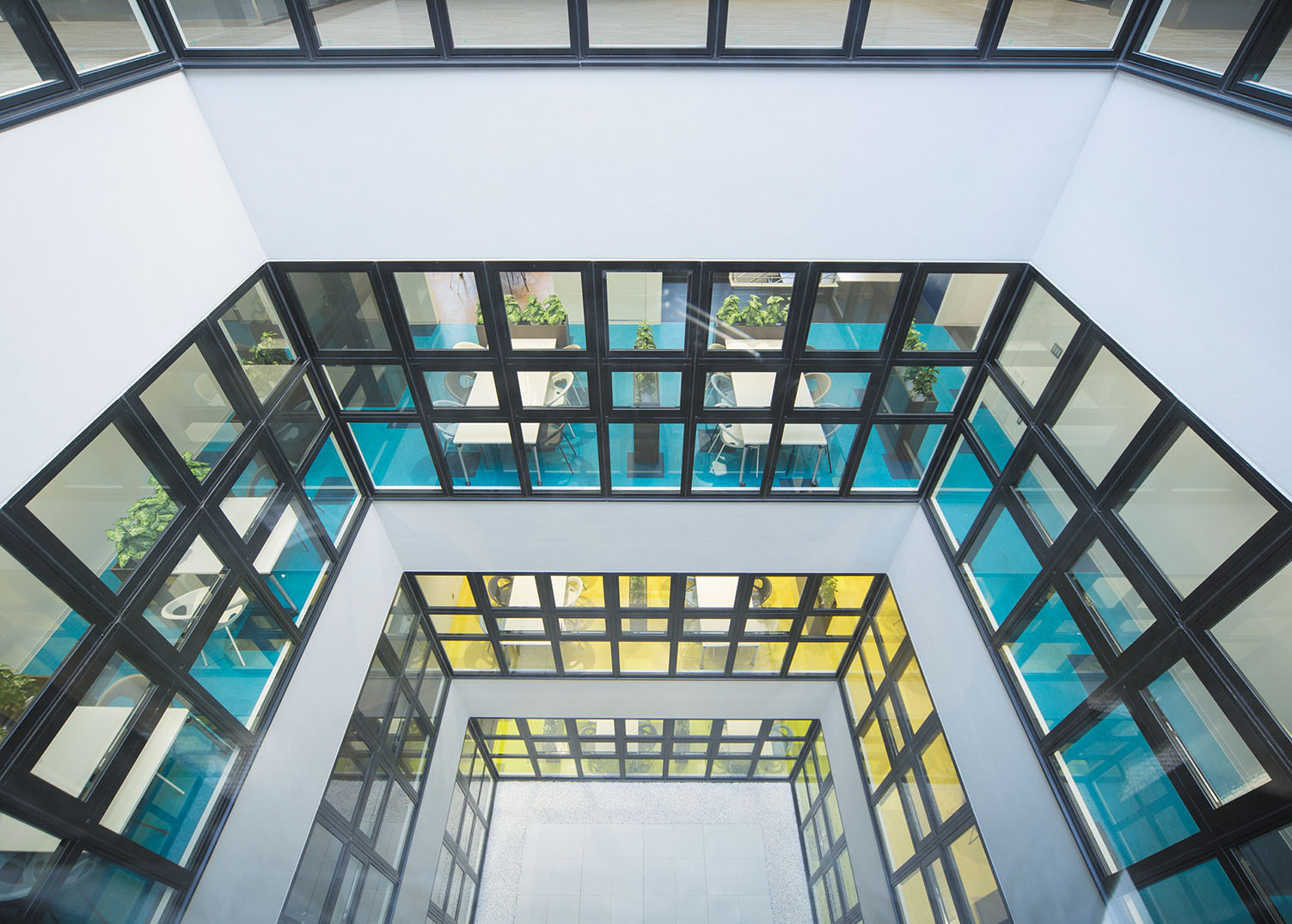
Aguru market, outdoor concert, Bon dance, and so on
The citizens making the best use of the buffer zone and surpassing expectations
The Agui Town Office was rebuilt on site without placing extra temporary buildings. The new government building was finally completed in March 2017 after demolishing the existing building and carrying out construction work in phases, while maintaining the functions of the town hall and taking into consideration the safety and convenience of the citizens. The functions of the aging and decentralized government buildings were newly organized. Earthquake resistance was secured and infrastructure was developed to offer a disaster control hub that protects the townspeople. Natural energy was introduced for energy and resource conservation. In addition to such hardware renovations, there are ideas in every detail of the new town office as well.
The Aguru Market is held at the Engawa Mall under the eaves, where rain is not a concern. Outdoor concerts, cooking classes, and Bon dance festivals are held at Minna no Hiroba. Indoor concerts are held at the first-floor lobby of the government building during lunch hours. Each space is being utilized more than expected by those involved in the design process. It implies that people are subconsciously seeking buffer zones with freedom of activities, which would not have turned out the way it is if efficiency was prioritized.
Agui Town went back to its basics to provide a town hall that serves as a home to the citizens, thus creating a space dedicated to their people. In a time when society is constantly transforming with a declining and aging population, the question arises: “What should public offices be like?” It is such a major project to rebuild the town office that has been in use for more than half a century since its construction in 1959. Kawai, who participated as a designer explains, “The Chita Peninsula is a mix of cities, towns, and villages. I would only assume they were referring to the possibilities of future municipal mergers. It was eye-opening when I heard during the schematic design phase that they wanted to make sure the building could be used for other purposes. I was impressed by their foresight and clear vision that they wanted a building that could flexibly respond to future changes. It motivated me to follow their attitude in working on the design.”
Visitors bring their children to play and enjoy meals on the Engawa Terrace. The town office is welcoming regardless of whether or not there is an event going on, receiving tours from other local governments across Japan as a unique example of a government office complex.
